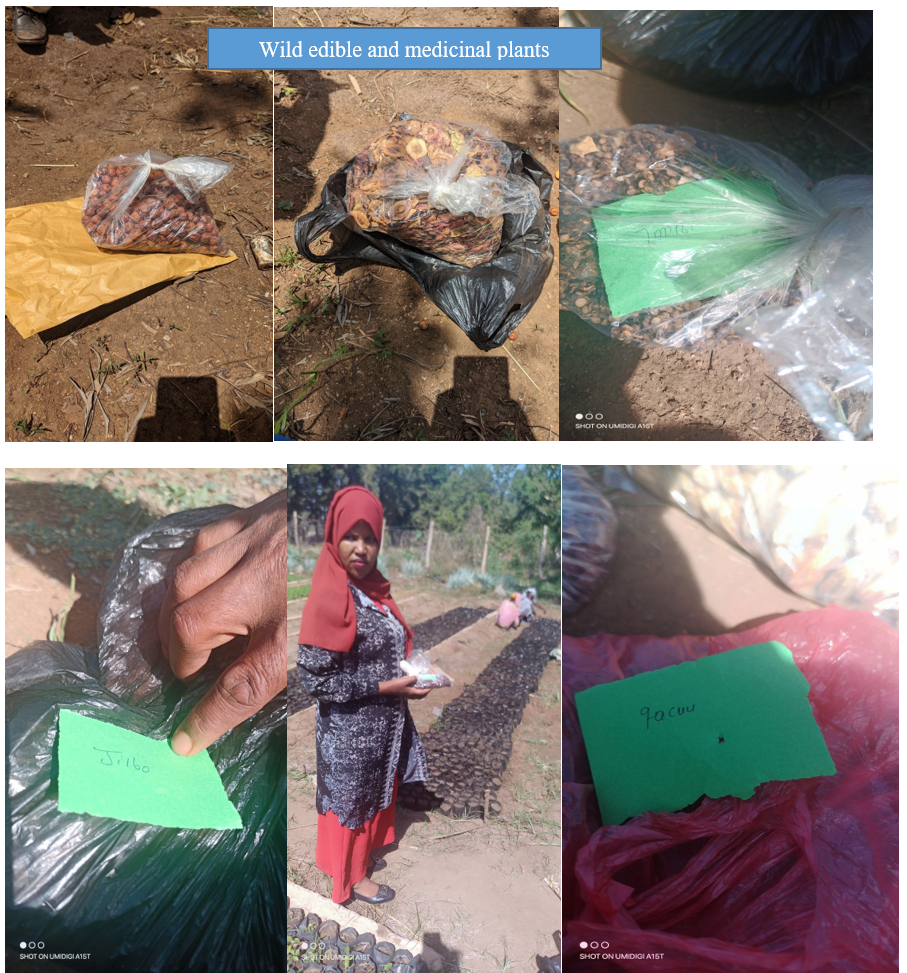Acquisition and Documentation of Traditional Medicinal and Wild Edible Plants in East Hararghe
Documentation of Published and Unpublished Sources
Efforts have been made to compile both published and unpublished sources on traditional medicinal and wild edible plants in East Hararghe. Various articles, community knowledge, and field observations have been collected to preserve indigenous ethnobotanical practices. These sources highlight the cultural and therapeutic significance of local flora, ensuring that traditional knowledge is systematically recorded for future research and conservation.
Nursery Preparation for Seed Raising
To support the conservation and domestication of valuable plant species, nursery preparations have been initiated. Around 10 nursery beds have been prepared to facilitate seed germination and seedling growth. These beds will enhance the propagation of key species, ensuring their availability for both ecological restoration and community use.
Seed Collection of Traditional Medicinal and Wild Edible Plants
Seeds from 10 important plant species have been collected for propagation and domestication. These species were selected based on their medicinal, nutritional, and economic value to local communities. The collected seeds will be used for cultivation in nurseries and agroforestry systems to promote biodiversity and sustainable use.
The following species have been prioritized for domestication due to their cultural significance and ecological benefit.
- Balanites aegyptiaca (Badanoo)
- Berchemia discolor (Jajabaa)
- Gardenia ternifolia (Gaambelloo)
- Oncoba spinosa (Jilboo)
- Osyris quadripartita (waatoo)
- Punica granatum
- Tamarindus indica (Roqaa)
- Terminalia brownii (Bireyssaa)
- Toddalia asiatica (geeddaa)
- Kurkuraaefits:
Generally, the systematic documentation, seed collection, and nursery development efforts aim to conserve East Hararghe’s rich ethnobotanical heritage. By domesticating these species, communities can sustainably utilize these plants while preserving biodiversity for future generations. Further research and community engagement will enhance the success of these initiatives.

